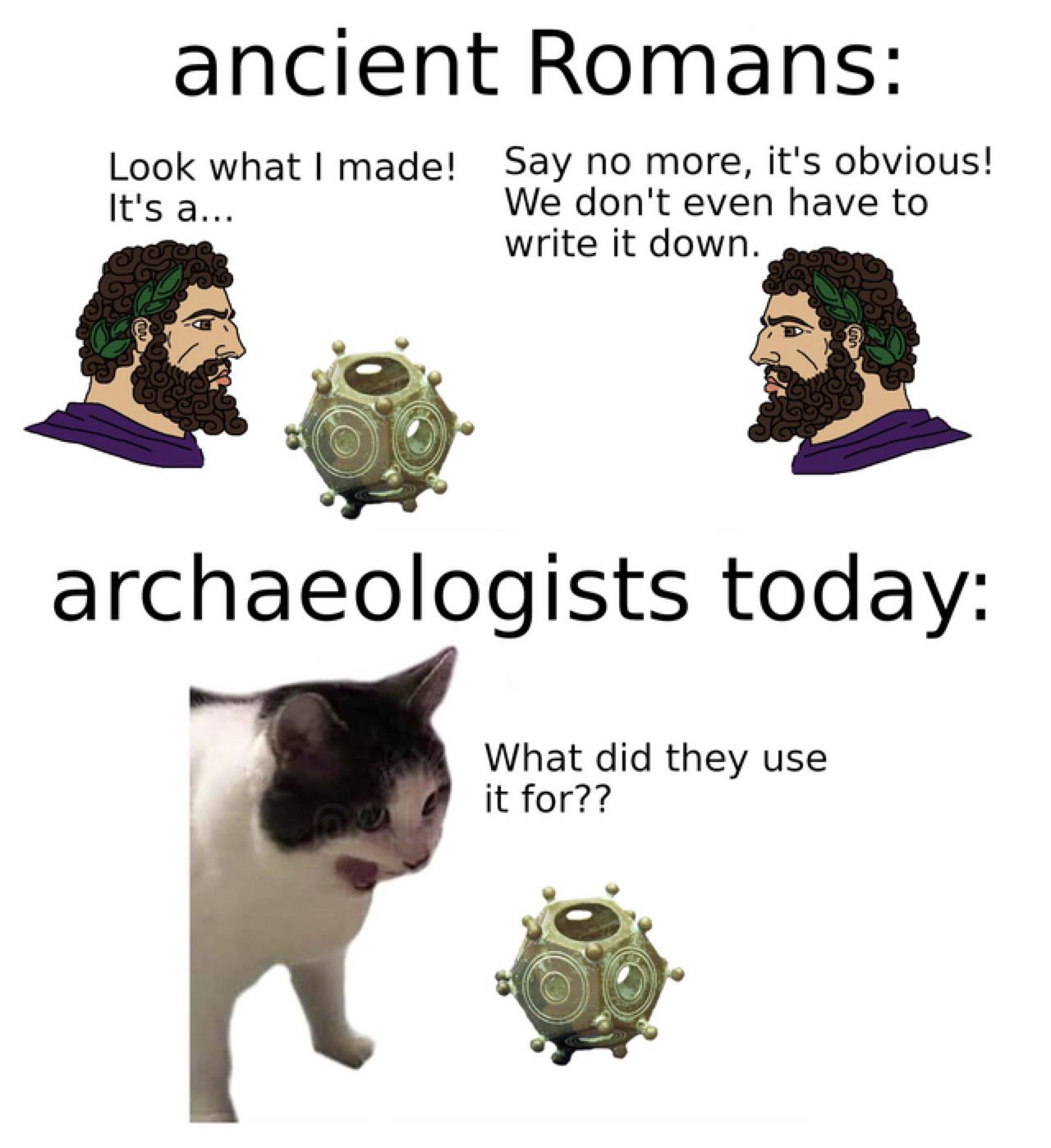this post was submitted on 03 Feb 2025
513 points (98.5% liked)
memes
11360 readers
3164 users here now
Community rules
1. Be civil
No trolling, bigotry or other insulting / annoying behaviour
2. No politics
This is non-politics community. For political memes please go to [email protected]
3. No recent reposts
Check for reposts when posting a meme, you can only repost after 1 month
4. No bots
No bots without the express approval of the mods or the admins
5. No Spam/Ads
No advertisements or spam. This is an instance rule and the only way to live.
A collection of some classic Lemmy memes for your enjoyment
Sister communities
- [email protected] : Star Trek memes, chat and shitposts
- [email protected] : Lemmy Shitposts, anything and everything goes.
- [email protected] : Linux themed memes
- [email protected] : for those who love comic stories.
founded 2 years ago
MODERATORS
you are viewing a single comment's thread
view the rest of the comments
view the rest of the comments

Socks rarely last a year, fabrics existed in Rome, it's like not knowing if 2 + 2 equals 2 because there aren't any historical examples of people putting two and two together until the xth century AD.
The reason that knitting isn't the currently accepted answer, is that its pretty well understood that in the periods where these are found, Romans quite literally did not knit. Also, Romans documented, like, everything.
https://en.wikipedia.org/wiki/History_of_knitting
First of all, Wikipedia is not a source. All of the sources on Wikipedia are annotated in the text and listed at the bottom of the page. All you have to do is look down, get the actual source, and use that. You couldn't be bothered to do the bare minimum to give an argument but still waste time throwing out links to non-sources?
Secondly, from your "source":
What Wikipedia is pointing out is that archeologists for many years did not understand how to distinguish Coptic stitch from knitting. They look very visually similar, but have different physical properties. This did lead to confusion among archeologists - I’ve also seen the fact that other languages don’t distinguish two needle knitting (“true” knitting) from needlebinding techniques (some don’t even seem to have a separate word for crochet, argh…)
I’ve stumbled on some arguments for 8th century examples - but even if we are pushing back the origin date for knitting that far, that still doesn’t put us in Rome (unless we’re counting Byzantium lol). It also does not at all justify the dodecahedron.
Will you be happier if I say the Dodecahedron was likely used for, among other things, setting together strings for fabric in the shape of gloves and mittens? Since the word "knitting" is apparently far too complicated and nuanced for this discussion...
There is no evidence of that, and it does not align with the known techniques that Romans used for textile production. It would make zero sense as a tool for weaving, sprang or needlebinding.
I also have strong doubts for finger gloves being anything other than extraordinarily rare. Cmon, Roman clothes are mostly just draping yourself with big ass rectangles.
Like, there’s just nothing there. YouTube grandma did something cute - I’ve been blackout drunk at the science museum knitting shit with pencils - that’s not evidence that pencils are knitting tools. It doesn’t make sense as a textile art tool. The closest might be as a cordage/rope making tool - maaaaybe all of those extra knobs add some kind of tension - but that just doesn’t seem likely either.
It really comes down to - what is your evidence? Why do you think it was a textile art tool for creating mittens?
If you think the idea of “knitting” is itself too complicated to understand - why are you making arguments about textile history? What knowledge or interest do you have of textile history?
I understand it, mate, I don't think you understand it.
What exactly do you “understand”? Do you knit? Do you do any sort of fiber art? Sometimes I think an aspect of this conversation is that people don’t understand or respect the complexity of fiber arts. Fast fashion has entirely distorted our understanding of how much complexity is involved in just producing the thread. Wool and flax have to be spun before you can knit or weave with them.
Needlebinding makes more sense in that premodern context where you don’t have modern sheep bred to have nice long staple length and the kind of spinning wheel to get consistent long threads. Needlebinding you usually work with short lengths, felted together.
It’s worked on/off the thumb with a single needle. Tying it to one of the dodecahedron pegs would be dumb.
For weaving, I guess you could use it as a really stupid pin loom.
Which yeah - I don’t think the Romans were stupid. Making a needlessly expensive metal object to do things extra inefficiently… why? The Romans had better ways to make textiles, which we actually have evidence of.
Arguments in history have to be more than “I saw a video of someone on YouTube doing someone cool, so that must be how the world works.”